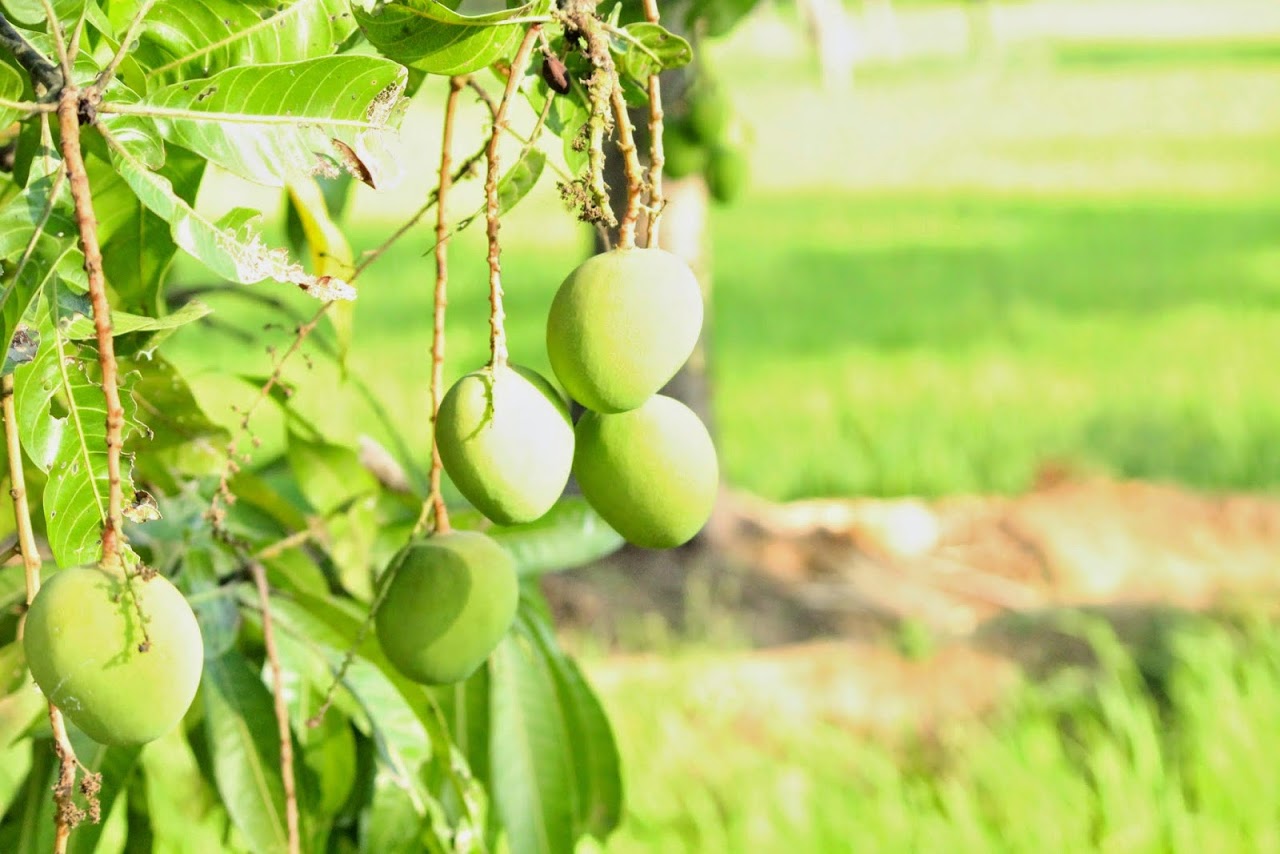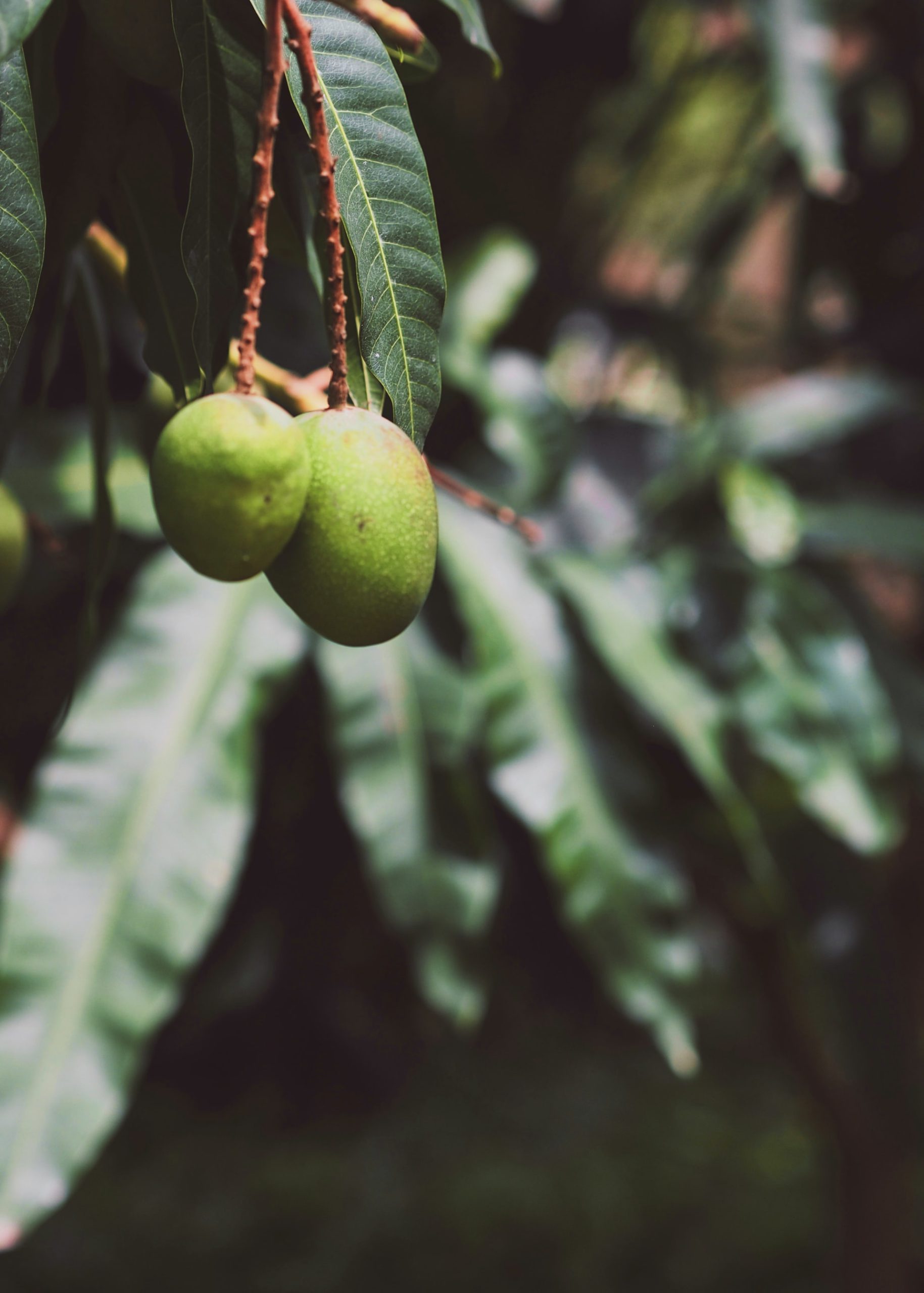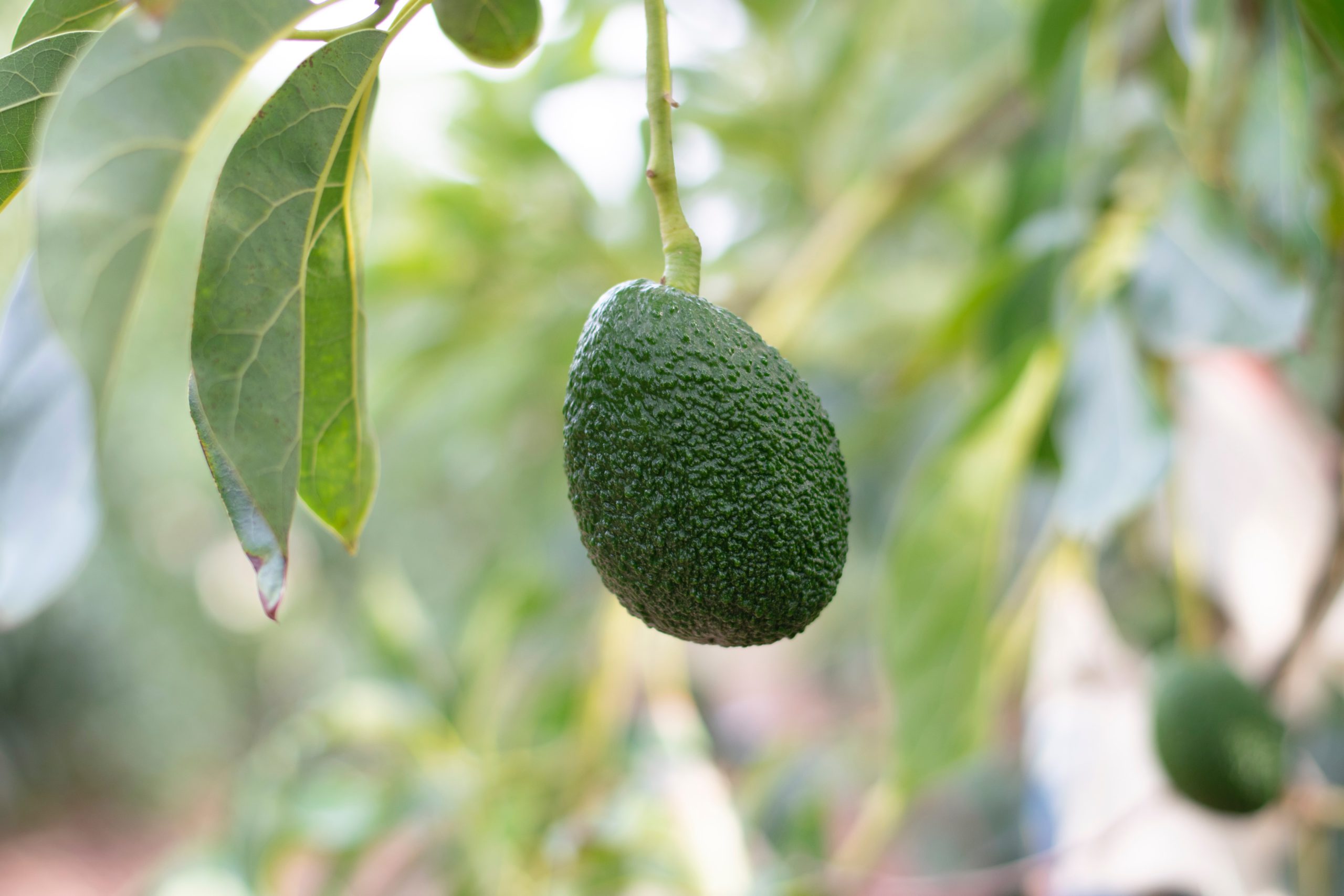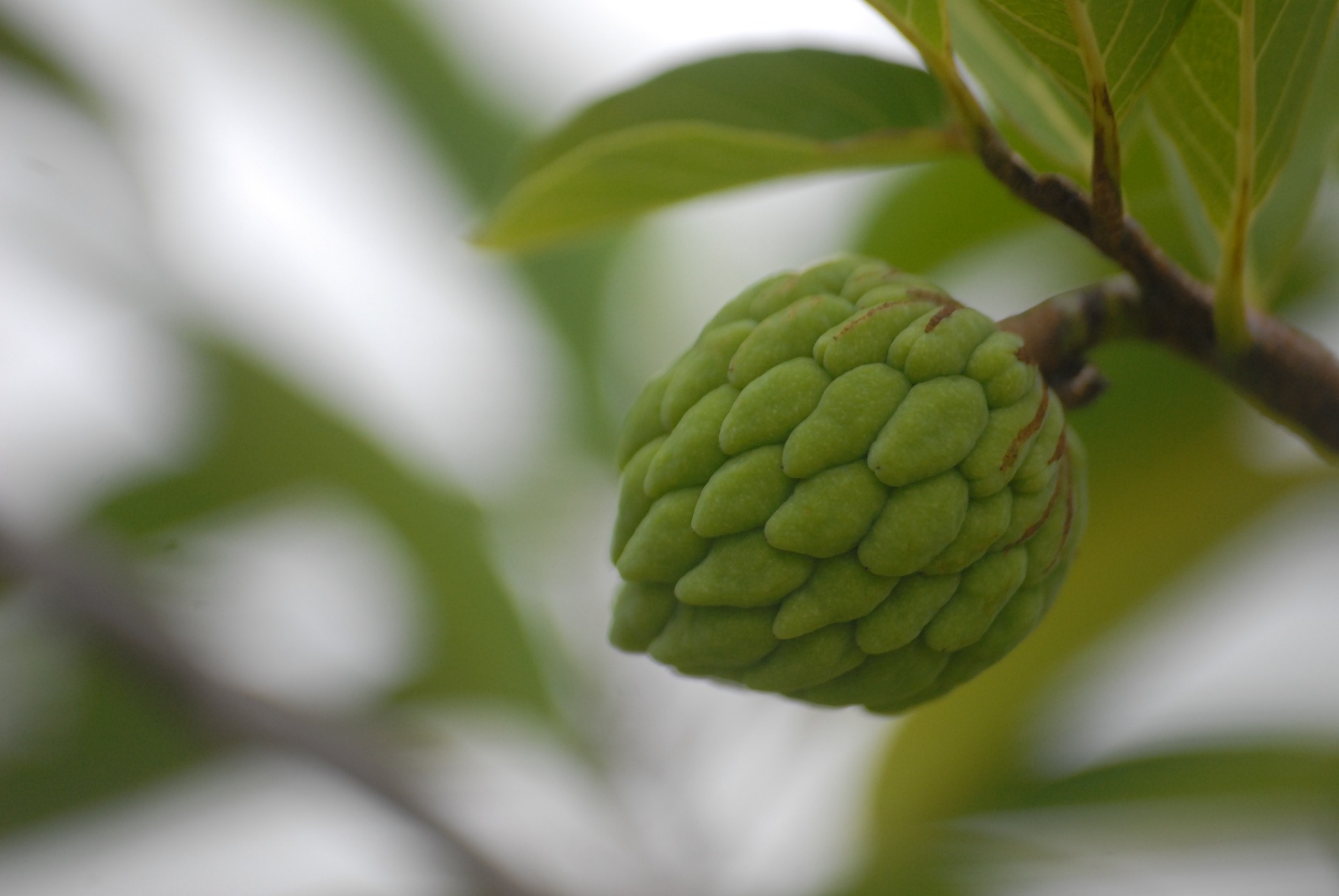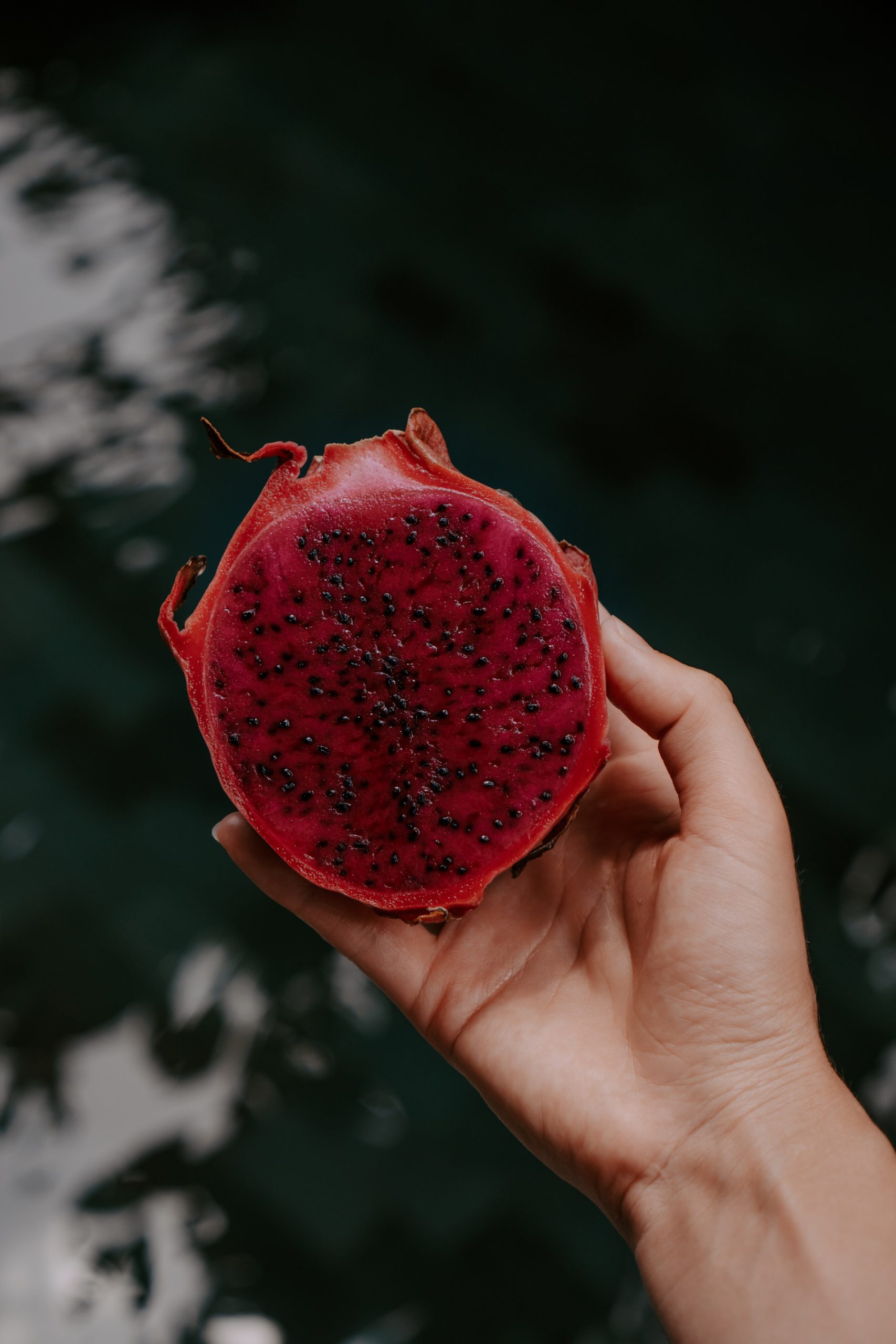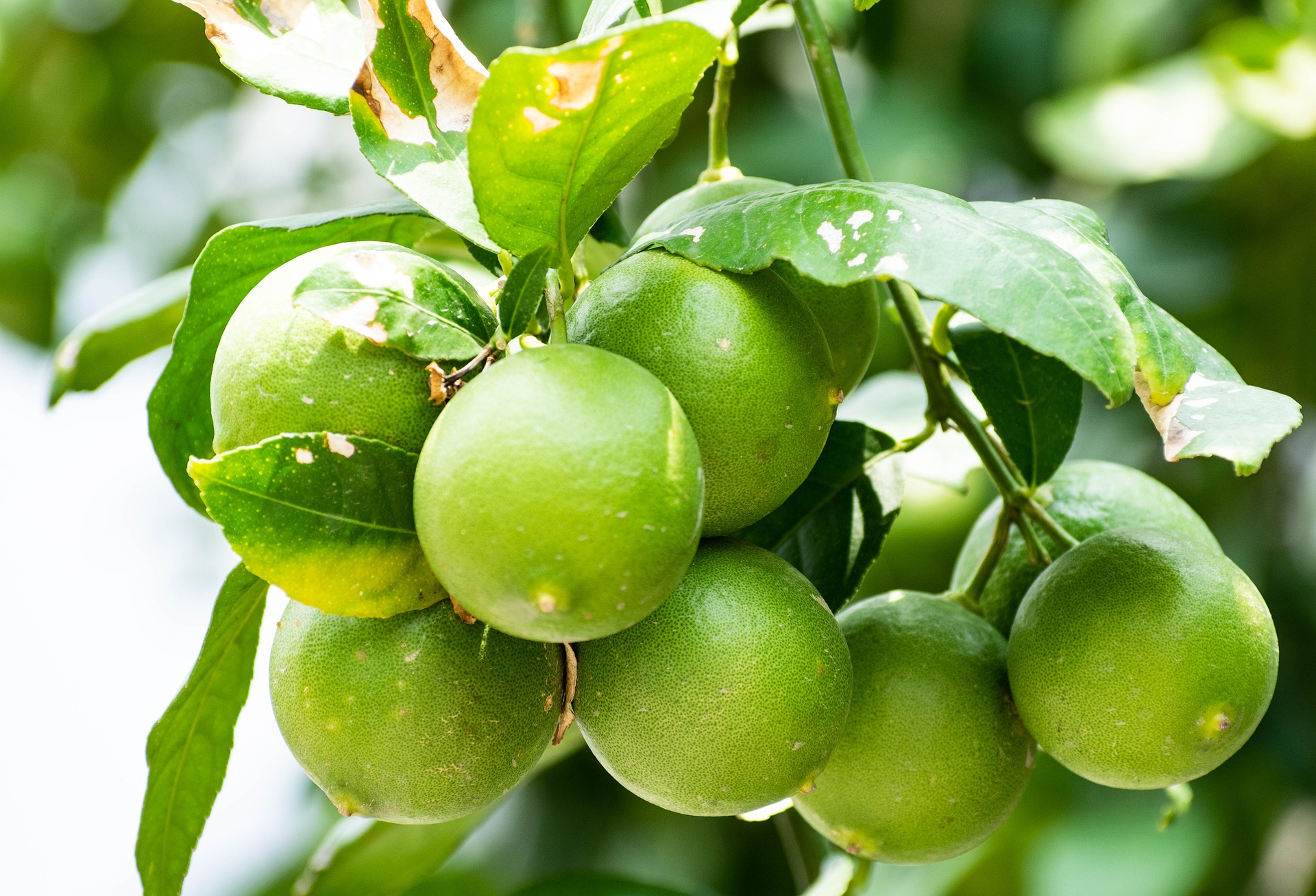Your cart is currently empty!

Papaya Farming Guide For Profit
Papaya is one of the easiest crops to grow. It requires very minimal maintenance and less water. It is easy to grow and with the right nutrients, the profits are high. There are farmers who average up to 3 Lakhs in profit from one-acre land with papaya farming. The profits could go as high as 5 Lakhs per acre.
The above figures are obtained from ISHS website from a survey done in Maharashtra. The complete survey details are available on https://www.actahort.org/books/851/851_5.htm
While most farmers find it difficult to market their produce, Papaya farmers too have their own set of problems. Its not uncommon to see some papaya farmers go into loss. Planning for the right time, The correct season and ensuring minimal cost and expenses in maintaining the papaya farm makes for better profit. Trying to compete with other fruits is not a good idea for a papaya farmers. If you plant your papaya trees to harvest during march to may, chances are that there are plenty of mangoes in the market. Most of the labourers would be busy with mango pickings as it pays more. You will have a hard time finding labour. Also the price will be lower than usual as there is no market for papayas during this time. Everyone will be buying mangoes while papayas are only purchased by a small group.
Timing your produce is important for better profit. There are other factors like the kind of seed you plant, opportunities to send to other states where papaya has a better market and creating a market locally to sell more . Possibilities of profit with papaya cultivation and farming is higher than what most people would want to think. We will look at some of the key people who have made profit in farming papayas and calculate how this profits came to be.
FACTS : India is the Largest producer of papaya in the world. More than half the papayas produced worldwide are cultivated in India
Climatic Conditions and Suitable states for Papaya cultivation.
While papaya can be cultivated almost anywhere in India bar a few states, there are some locations where papaya grows extremely well due to the weather. Papaya is a tropical fruit. It prefers warm climate with just about enough water. Too much water can lead to pests and problems related to root rotting and funguses. Its important that the soil remains nearly dry.
The best states which grow Papaya include Kerala, Maharashtra, Gujarat, Andhra Pradesh, Telangana, Karnataka, Orissa, West bengal and madhya pradesh.Almost every state has a different variety of Papaya which is suitable for their weather and recommended by their respective agricultural boards.
FACTS : Exports of Papaya is less than .08% . Most of the produce cultivated in India is consumed in india.
If the temperature goes below 12 degrees, papaya is not suitable for that region. Papaya is also not recommended in areas where water logging is a concern. High rainfall areas should be well drained and water logging should be completely avoided.
Propagation of Papaya Plants
Papaya is propagated from seeds. You can acquire seeds from various sources and most agricultural universities do stock seeds from time to time, specially 8-9 months before monsoon. Papaya seeds collected from the fruit pod should be carefully selected. The fruit should be big and the mother plant should be free from pests and diseases. Its important for the fruit and plant to be healthy. Chances are that there are equal chances of a male and a female plant in the pod. Your chances or getting lesser male plants are higher if the seeds are chosen from the head area where the fruit is attached to the tree. When choosing the seeds, discard all light and dark black colored seeds. Ensure that the fruit is ripe and on collection of the seeds, let it shade dry for 3 days. This allows for the sarcotesta (the gel layer around the seed) to wrinkle. After 72 hours pick all seeds that look the same in size and weigh the same. It’s just an estimation. You can avoid all the seeds which have shrunk to a smaller size than the majority of the seeds. The seeds are ready to plant and you can use a germination tray with coco peat for the germination process. Keep the tray in a shaded warm and moist area. Ensure that you water the seeds twice a day and the tray is moist. The seeds usually take around 2 weeks to germinate. Once the plants are near 3 inches tall, remove all the leggy plants and other plants which look too weak. You will be discarding around 15% of all the germinated plants and selecting only those which are healthy for transplanting.
To sum it all
- Collect seeds from the head section of the fruit
- Seeds should come from healthy fruit and a healthy plant
- Allow 3 days of shade drying before sowing
- Discard all seeds which look small, weak or light
- When the plant sapling reaches 3 inches if height remove all weak and leggy plants leaving only healthy ones for replanting.
For Seeds purchased, You need to only do steps 4 and 5
Replanting Papaya Saplings
Once the Papaya plant germinates and is 3 inches, you will need to move the healthy saplings to a grow bag. This helps improve root growth and helps the plant grow faster. Its too early to plant the Sapling in the ground as the plant will be weak. Its recommended that you leave the plant in a grow bag for up to 2 months Or till the plant is approximately 10 to 12 centimeters in height. Once the plant is around 10 centimeters in height, Its time to replant your papaya sapling.
Preparation of soil.
Clay soil is not recommended for papaya cultivation. Sandy loam soil with no water retention is recommended. It does grow well in alluvial soil as long as there is no water retention. Its important that papaya root remains relatively dry throughout its life to prevent root rot and fungal diseases. The PH Level of the soil is to be between 5.5 and 6.5 and should be relatively free from Lime. Light soil with proper manuring is found to be beneficial too. The usual practice in most commercial farms with high density papaya farming is to create a raised bed with loose soil for up to 2-3 inches height. The area is covered with mulching sheets and dotted with drip pipe lines for watering the plants. After a while, the root will spread out and you will not need to worry if the raised bed flattens out. With the mulching sheets, you can be worry free about weeds. There are practices where mulching sheets are not used. You may need to week 2-3 times till the plant grows to a desired height, usually around 2 feet tall after which you can stop weeding. If the plants are spaced out for more than 6-7 feet, small tillers can be used to til the land between the rows of plants. With higher density plantations this may be a concern, but usually weeds do not occur after the plant has reached a good height.
If you are growing organic, its recommended that you space the plants out well. Just in case you have a virus, you can always delay the spread to other trees and take Necessary action. It’s important that you keep the ground area clear to prevent diseases but sometimes with organic farming, you may want to intercrop papaya with plants which will avoid pests. A common plant which helps prevent pests is Marigold. Marigold is sold in the market at a good price and you can do a picking of the flowers in 2-3 months after planting them. This gives you an opportunity for extra income while preventing pests in your papaya farm.
Irrigation
Papaya needs Very little water, especially during the initial stages. Giving just enough water the first few months after replanting helps the base of the plant to grow thicker while not gaining in height. With more water, chances are the papaya plant will grow taller. With taller trees, the risk of it breaking or falling is higher. First few months, up to 4-5 months give minimal water increasing slowly. During the flowering season, ensure that there is enough water and increase water during fruiting seasons. If you water the plant right, you will have a thicker base and the fruiting will start from 2 feet from the ground. This is extremely good for picking and easy for application of any pesticides, organic or chemical based, when required. With minimal watering during fruiting stage, its seen that the fruits are sweeter as opposed to watering generously. An adult Papaya plant will require 6-8 litres of water per day through drip irrigation. It will require 15-16 litres with normal irrigation techniques. Remember while irrigating papaya plants, the water should not touch the stem of the plant and there should be no water flooding for more than a few hours. Chances of root rot will increase with water stagnation. The base of the plant should be dry most of the time. This is one reason why drip irrigation is the most suitable for commercial papaya cultivation.
Pest & Pest Control
Spider Mites, Nematodes and Fruit Fly are common problems in Papaya Plants.
| Pest | Pesticide |
| Spider Mites | Phosphamidon : 0.05% OR Methyl Parathion : 0.04% |
| Nematodes | Carbofuran : 2KG per Hectare OR Neem Cake |
| Fruit Fly | Dimethoate 0.1% |
Pests can be controlled by maintaining healthy hygiene for plants. Keeping the surface soil dry and avoiding water logging will prevent Nematodes. Avoiding intercropping and removing plants which attract spider mites and fruit fly will prevent pests from affecting papaya plantation. Ensure that the fruits are not allowed to ripen on the papaya plant and ensure that fruits that fall are removed from the area daily.
Powdery Mildew
Symptoms : Darkened leaf which will turn to white powdery spots later which covers the entire leaf, Small malformed fruits and distorted leaves are all symptoms of powdery mildew
Remedy :
- 30g Sulphur in 10 Litres of water spray
- Spray 5ml Calixin 75 EC in 10 Litres of water every 15 days
Leafblight
Symptoms :
- small discloured lesions irregularly scattered on leaves. They turn brown to gray in color
- considerable reduction in yield
Control : Spray Dithane M45 .2% starting from appearance of symptoms
Damping Off
Usually affects young seedlings. Lesion of Stem Just above soil level. Stem becomes watery and shrinks near ground level.
- Treating seed with Trichoderma Viride 3-4 Gm per kg of seed
- OR Captan 3gm per KG of seed.
- Well drained soil is to be maintained with no water stagnation
Foot Rot
Symptoms : Water soaked patches in stem near ground level. Patches enlarges, turns dark brown or black , indicating rot. Plant will fall with strong wind and if only affected on one side, will shunt the plant and fruit is malformed. The plant will die eventually.
Control :
- Trichoderma Virde 15gm / plant applied at the rootzone at the time of planting
- Drench Soil With 2-3 Litres of Copper Oxychloride (3 Grams per liter of water) Every 15 days and also sprayed on the plant.
- OR Mancozeb 2.5 g / Litre of water
- for infection on existing plant, scrape the affected area and apply a mix of Copper Oxychloride or Bordeux paste
- Avoid Water stagnation in the root area.
Anthraconse
Symptons :
- Brown or Black Depressed spots on fruit
- Water soaked or sunken spots on fruits. Pink fungal formation in the black spot.
- Irregular water soaked spots on leaves which eventually turn brown.
- Symptoms on fruit usually are seen when it ripens.
Control :
- Remove affected fruit and destroy. Harvest fruits as soon as they mature.
- Spray 3Gm Copper Oxychloried with litre of water
- Or Spray Carbendazim 1 Gm per litre of water
- Or Thiopanate Methy 1 gram per liter of water Every 15 Days
- Hot water treatment and fungicidal wax treatment recommended for Fruits .
Papaya Mozaic :
Symptoms.
- Affects Young plants. Top Young leaves are reduced in size and blisters are formed.
- Transmitted through aphids. The top leaves are reduced in size and takes an upright position.
- Reduced growth
- Fruits develop water soaked lesions with central solid spot.
- REduced fruit size
Control :
- Remove affected plant
- Control aphid population
- Carbofuran 1 KG per hectare at the time of sowing
- foliar sprays of Phosphamidon every 10 days
Leaf Curl
Symptoms :
- Severe curling of leaves
- Deformed leaves.
- Young leaves are more affected.
- Thickened veins in affected leaves.
- Complete defoliation in severely affected plants
- Stunted growth of plant
- Reduced yield
Control :
- Remove affected plant and destroy.
- Reduce white fly population
- Soil application of carbofuran 1 kg per hectare
- 4-5 foliar sprays of Dimethoate or Metasystox or Nuvacron every 10 days for whitefly control
Ring Spot virus
- Yellowing Of leaves
- spread Through aphids
- Leaf distortion, Yellow Mottling of leaves, Severe Blisterng of leaves
- Dark grean streaks and rings on leaf stalks and stems.
- Spots, concentric rings and c shaped marking son fruits
- Darker brown rings on ripe fruits
- Poor fruit quality and Flavour.
Control :
- Remove infected plant and destroy.
- Control Aphids
- Carbofuran 1 KG per hectar in nursery bed at time of sowing seeds.
- 2-3 Foliar sprays of Phosphamidon every 10 days
Variety & Features
Coorg Honey dew : Good Fruit Quality
Pusa Dwarf :
- 1-2 KG Fruit.
- Drought Hardy.
- Yield from 25-30 Cm Height
- Suitable for high density
Pusa Giant:
- Fruit weight 2.5-3 KG.
- Strong , Wind tolerant Vigorous plants.
- Suitable for canning
Pusa Majesty:
- Tolerant to Viral Diseases and root knot.
- Suitable for papain production.
- Medium sized fruit 1-1.5 kg,
- Round Fruits
- Starts fruiting at 146 days from transplanting
Pusa Delicious:
- Yield in 8 months.
- Good Quality fruits 1-2 kg with excellent flavour.
CO1:
- Dwarf plant.
- Yield when plant is 60-75cm from ground level.
- Soft firm Fruit with Orange yellow flesh.
- Good shelf life.
- No papain odour
CO2 :
- Red flesh.
- Apt for Papain Cultivation.
- Moderately juicy.
- Good shelf life .
- 4-6 Grams papain per fruit
CO3:
- Hybrid of CO2 and Sunrise Solo.
- 100-120 Fruits per tree in two years.
- 1-1.5 KG.
- Good shelf life.
CO5:
- High Papain Production.
- 14-15 gm Papain per fruit.
- 75-80 fruits per tree in 2 years
Wasington :
- 1.5-2 KG Less seeds.
Solo :
- Small fruit .
- Good taste and deep pink pulp.
- Good for kitchen garden
Ranchi:
- Dark Yellow pulp and sweet taste
IIHR39 , IHR54:
- Sweet fruit medium size.
- good shelf life
Taiwan 785 :
- Disease tolerant.
- Dwarf Variety .
- Fruiting from 60-75 cm from Ground .
- 100-125 Fruit per tree in a year.
- Good shelf life.
Taiwan 786 Red Lady :
- Starts fruiting at 100 cm from ground level.
- 2-3 KG fruits.
- Excellent shelf life.
- Few Seeds.
States in India with Highest Papaya Production
India is the largest producer of papayas in the world today. While some of the states have contributed for the maximum production of papayas due to weather and soil conditions, other states do produce their fair share of papaya production for local consumption and latex production. Below are some of the best few states which produce the maximum amount of papaya in india and the varieties they produce.
Papaya Farming in Andhra Pradesh
Andhra pradesh is known for its farming prowess. From fish to rice and even papaya, Andra produces in abundance. 28% of papayas cultivated in india came from Andhra pradesh accounting for 1687,000 Metric tonnes in 2017. It was the largest papaya producing state in 2006 and 2015. Latest figures for 2018 ,2019 are still not available but clearly , Andhra is taking a good lead from Gujarat which stands second in position with 1256,000 metric tonnes.
The highest production of papaya in Andhra Pradesh was seen in the Cuddapah, Medak, Kurnool, Rangareddy regions.The varieties which are suited for andhra include Honey Dew, Coorg Honey Dew, Washington, Solo, Co-1,Co-2, Co-3, Sunrise Solo, Taiwan 786 (Red Lady)
Papaya Cultivation Gujarat
Gujarat is the second largest Papaya producing state in india with 1256000 Metric tonnes papaya cultivation accounting for 21% of the total produce in india. Being a dry area, gujarat has no problems of water stagnation and with drip irrigation, the plants get sufficient water while saving water resources. From 2016 to 2017 the growth area of papaya in gujarat has reduced by 1% by at least 33000 Metric tonnes.
Kheda , Ahmedabad and Jamnagar accounted for the most amount of papaya production in gujarat. The Pusa Variety was known to be the choice among farmers and it was researched that the pusa delicious and pusa Nanha were found to yield more and taste better in gujarat.
Papaya Cultivation Bihar
Bihar is not a major producer of Papaya. It accounts for only .74% of the total produce in india and very few farmers have taken initiative to produce papayas. The lack of infrastructure and water limits cultivators in Bihar to produce the fruit. A large factor also depends on the inability to sell the fruits locally.
Papaya Cultivation odisha
Orissa produces nearly 71,000 Metric tonnes of papaya every year and accounts for 1.2% of the total produce in india. The varieties cultivated and suitable for Odisha include Pusa Delicious, Pusa Nanha, Ranchi selection, Honey Dew, Washington, Coorg Green. Papaya is cultivated as a fruit for consumption and not for pulp or latex in Orissa.
Papaya Cultivation Assam
Assam Produces 141,000 Metric tonnes of papaya a year. Its one of the few crops which were discovered to be successful among farmers. Rebels Turned organic farmers turned to papaya cultivation and farming in general and found success in the assam region. People of assam and specially those who were once rebels have turned up to farming and specifically papaya cultivation after a few success stories.
The Nagaon, Darrang, Karbi Anglong areas are known to be successful in papaya cultivation. There has been very little help from the government to these farmers and yet they have found means to export their produce.
Papaya Farming in Karnataka
Karnataka is the third largest producer of papaya in india with 531000 Metric tonnes of produce in 2017 accounting for 8.96% of the total produce in india. its cultivated in Bellary, Bidar, Bangalore, Mandya, Shimoga, Chitradurga, Mysore, Belgaum, Hassan areas. The pusa and coorg varieties are preferred by farmers in this area. Karnataka has medium rainfall but occasional cyclones in some regions. Papaya is best suitated for non coastal areas of karnataka where wind is moderate.
Papaya Farming in Kerala
Kerala Stands 12 in the total produce of papaya in india with 85000 Tonnes as produce. It accounts for less than 2 percent of the total produce in india. Papaya is not produced on a large scale in Kerala as the rainfall is high. Being a coastal areas its also not suitable. Many farmers have found success in cultivating papaya near river areas where the soil is more sandy. The common variety grown here are Pusa and the coorg .
Papaya Farming in Jharkand
Jharkand Ranked 10th in the total produce of papayas and its evolving fast not just in papaya cultivation but farming in general. Farming has been increasing at the rate of 6% per year. Jharkand produced109000 Tonnes of papaya in 2017 accounting for near 2% of the country’s papaya. Papayas are cultivated in Simdega, Ranchi, Lohardaga, Hazaribagh, Chatra
regions of Jharkand and the preferred varieties include Ranchi selection, Honey Dew and the Pusa
Papaya Farming in West Bengal.
Westbengal accounted for over 6% of the total papaya cultivation in india. At 357000 Tonnes in 2017, papaya cultivation is the primary crop for many farmers in west bengal. The variety of papaya grown include Ranchi selection, Honey Dew, Washington, Coorg Green and Hooghly, Nadia, Midnapur accounts for the most amount of produce in west bengal
Papaya Farming in Madhya Pradesh
Madhya Pradesh is the 4th largest producer of papaya in India with 495000 tonnes in produce for the year 2017. this accounts for nearly 8.35% of produce in India.the Dhar, Khandwa, Bilaspur, Ratlam, Guna regions of Madhya Pradesh produce the most amount of papaya.
Papaya Plantation in Maharashtra
Maharashtra produced 344000 tonnes of papaya in 2017 standing 8th among papaya producers in india. Sangli, Satara, Pune, Nasik, Sholapur, Nagpur, Amravati are major regions which produce papaya in Maharashtra. While some of these regions are know for other crops like Strawberries, Mangoes and other high value fruits, people are considering papaya for its lower maintenance and water resources
Estimated Expenses and profit per acre for one acre Papaya cultivation
- Land Preparation and Clearing: ₹10,000 – ₹20,000
- Papaya Saplings (Seedlings): ₹10,000 – ₹20,000 (approximately 200-400 saplings at ₹50 each)
- Fertilizers and Nutrients: ₹15,000 – ₹25,000 (includes NPK fertilizers and micronutrients)
- Pesticides and Herbicides: ₹5,000 – ₹10,000 (for pest and disease control)
- Irrigation System: ₹5,000 – ₹10,000 (if needed for efficient water management)
- Labor (Planting, Weeding, Pruning, Harvesting, etc.): ₹30,000 – ₹50,000 (including seasonal labor costs)
- Miscellaneous Expenses: ₹10,000 – ₹20,000 (includes other costs like transportation, tools, etc.)
Total Estimated Expense: ₹85,000 – ₹155,000 per acre
2. Estimated Profit for One Acre Papaya Cultivation:
- Average Yield per Acre: 2500 – 3500 papaya fruits (approximately)
- Market Price per Papaya Fruit: ₹10 – ₹15 (varies with location and demand)
Total Revenue: ₹25,000 – ₹52,500 (estimated revenue from 2500 to 3500 papaya fruits at ₹10 to ₹15 per fruit)
Net Profit (Profit after deducting the expense from revenue): ₹-60,000 to ₹-102,500 (Negative profit due to estimated expenses exceeding revenue)
FAQs on Papaya Cultivation in India
What are the best regions for papaya cultivation in India? Papaya thrives in tropical and subtropical climates with well-draining soil. Coastal regions and states like Andhra Pradesh, Karnataka, Kerala, Tamil Nadu, and parts of Maharashtra and Gujarat are suitable for papaya cultivation due to their warm temperatures and adequate rainfall.
What is the ideal time to plant papaya saplings in India? Papaya can be planted throughout the year in regions with a warm climate. However, it’s best to avoid the peak of the monsoon season to prevent waterlogging and root rot. In most parts of India, planting from February to April and August to October is recommended.
How much space is required between papaya plants during plantation? For optimal growth, spacing between papaya plants should be around 6 to 8 feet apart in both directions. This allows enough room for the plants to spread and receive adequate sunlight and air circulation.
What are the essential nutrients and fertilizers required for papaya cultivation? Papaya plants need a balanced blend of nitrogen, phosphorus, and potassium (NPK) fertilizers. Organic manure and compost can also enhance soil fertility. Regular applications of micronutrients like magnesium, iron, and zinc are beneficial for healthy fruit development.
How often should papaya plants be watered? Papaya plants require consistent watering, especially during the initial stages of growth. During hot and dry weather, frequent watering may be necessary. However, overwatering should be avoided, as it can lead to root rot. Maintaining a well-draining soil can help prevent waterlogging.
How can I control pests and diseases in papaya cultivation? Common pests in papaya cultivation include aphids, fruit flies, and mealybugs. Natural predators like ladybugs and lacewings can help control these pests. For diseases like papaya ringspot virus and powdery mildew, planting disease-resistant varieties and practicing good sanitation can mitigate risks.
At what stage can I expect papaya plants to bear fruit? Papaya plants generally start bearing fruit within 6 to 9 months after planting, depending on the variety and environmental conditions. Some dwarf varieties may produce fruit even earlier.
How do I know when papaya fruits are ready for harvest? Papaya fruits are ready for harvest when they reach their desired size and color. The skin should turn mostly yellow (for some varieties) and have a slight softness when gently pressed. Avoid waiting too long, as overripe fruits may attract pests and become less flavorful.
Can papaya plants survive in colder regions of India? Papaya is sensitive to frost and low temperatures. In colder regions with winter temperatures below 10°C (50°F), papaya cultivation may not be feasible unless grown in protected environments like greenhouses.
What are the potential challenges in papaya cultivation? Common challenges include pest and disease management, water management, extreme weather events, and fluctuating market prices. Staying updated with modern agricultural practices and seeking guidance from experts can help overcome these challenges.
How long does papaya take to grow?
Papaya plants take 8-9 months from seedling to fruiting. The plant lives up to 3 years.
What is the best variety of papaya?
The best papaya is currently the Taiwan 786 Red lady but this is a matter of opinion and what the majority of people have to say. Unfortunately this is not always true. The best papaya variety depends on what you are looking at (papain production or fruit), and The area of cultivation .While the REd Lady Variety is tolerant to viruses and the yield is high, but there are other varieties which fare better if the weather is suitable.
What is the season for papaya?
Papaya is not a seasonal fruit. The fruiting starts from the 8th or 9th month for most varieties and continuous up to the 3rd year. The fruits taste better during summer in most varieties. But in general there is no season for the papaya fruiting.
Do papaya trees need a lot of water?
Papaya requires very less water compared to most plants. With Drip irrigation , each plant would require 6-8 litres of water. Too much water is not recommended for papaya plants as it may cause root rot and nematode problems
How can I make my papaya grow faster?
Right Fertilization and soil conditions play a major role in growth of papaya plants. Too much water is not good and will shunt the growth of papaya plants. The soil should be free from clay and lime. Loose sandy loom soil is better and with the right manuring you can see growth in papaya plants.
Recent Categories
Recent Posts
Post Archive
Category Tags
There’s no content to show here yet.

